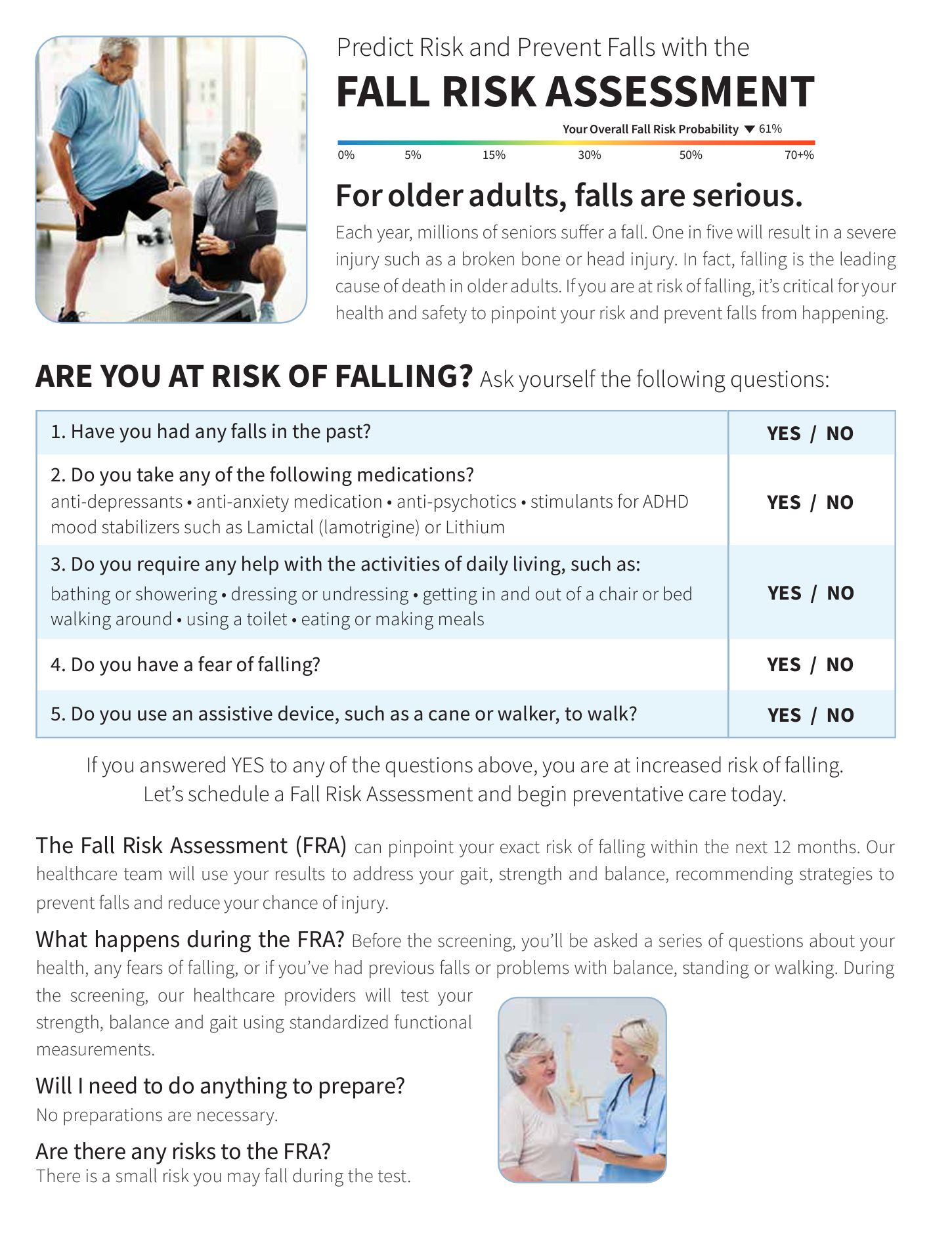The Greatest Guide To Dementia Fall Risk
An Unbiased View of Dementia Fall Risk
Table of ContentsDementia Fall Risk Fundamentals ExplainedGet This Report about Dementia Fall RiskLittle Known Questions About Dementia Fall Risk.Some Known Details About Dementia Fall Risk
A loss risk analysis checks to see just how most likely it is that you will drop. The analysis typically consists of: This includes a series of inquiries regarding your total wellness and if you have actually had previous falls or troubles with balance, standing, and/or walking.Treatments are suggestions that might minimize your risk of falling. STEADI includes 3 actions: you for your threat of dropping for your threat factors that can be boosted to try to avoid falls (for instance, equilibrium problems, damaged vision) to reduce your danger of dropping by making use of reliable methods (for instance, providing education and learning and sources), you may be asked several concerns including: Have you fallen in the past year? Are you worried regarding falling?
You'll sit down once more. Your provider will examine the length of time it takes you to do this. If it takes you 12 seconds or even more, it might mean you go to higher danger for a fall. This test checks stamina and balance. You'll rest in a chair with your arms crossed over your breast.
The positions will obtain more difficult as you go. Stand with your feet side-by-side. Relocate one foot midway forward, so the instep is touching the large toe of your other foot. Relocate one foot fully before the other, so the toes are touching the heel of your various other foot.
Getting My Dementia Fall Risk To Work
Many drops take place as an outcome of multiple adding aspects; for that reason, handling the risk of falling begins with recognizing the aspects that add to fall threat - Dementia Fall Risk. Some of one of the most relevant danger aspects include: History of previous fallsChronic medical conditionsAcute illnessImpaired gait and equilibrium, lower extremity weaknessCognitive impairmentChanges in visionCertain high-risk medications and polypharmacyEnvironmental variables can also boost the danger for falls, including: Insufficient lightingUneven or harmed flooringWet or unsafe floorsMissing or damaged handrails and grab barsDamaged or poorly equipped tools, such as beds, wheelchairs, or walkersImproper usage of assistive devicesInadequate supervision of the individuals residing in the NF, consisting of those who exhibit hostile behaviorsA successful fall risk monitoring program requires a comprehensive medical analysis, with input from all members of the interdisciplinary group

The care plan ought to additionally consist of treatments that are system-based, such as those that promote a safe environment (appropriate lights, hand rails, get hold of bars, etc). The performance of the interventions must be reviewed regularly, and the treatment plan revised as required to show changes in the autumn threat evaluation. Carrying out an autumn danger monitoring system using evidence-based finest technique can minimize the occurrence of falls in the NF, while limiting the potential for fall-related injuries.
5 Easy Facts About Dementia Fall Risk Explained
The AGS/BGS click guideline advises screening all grownups aged 65 years and older for autumn danger every year. This testing includes asking clients whether they have actually dropped 2 or more times in the past year or sought clinical investigate this site attention for an autumn, or, if they have actually not dropped, whether they really feel unsteady when walking.
Individuals that have dropped when without injury ought to have their equilibrium and stride evaluated; those with stride or equilibrium irregularities must obtain additional evaluation. A background of 1 loss without injury and without gait or balance problems does not warrant further analysis beyond continued yearly loss risk testing. Dementia Fall Risk. A loss threat assessment is required as component of the Welcome to Medicare assessment

Dementia Fall Risk Things To Know Before You Buy
Documenting a falls history is one of the high quality indications for autumn prevention and administration. Psychoactive drugs in specific are independent forecasters of drops.
Postural hypotension can usually be alleviated by lowering the dosage of blood pressurelowering medications and/or quiting medicines that have orthostatic hypotension as a side result. Use above-the-knee assistance tube and copulating the head of the bed elevated may additionally lower postural decreases in blood stress. The preferred elements of a fall-focused health examination are received Box 1.

A Pull time greater than or equivalent to 12 secs recommends high loss risk. Being not able to stand up from a chair of knee elevation without using one's arms investigate this site suggests enhanced fall threat.